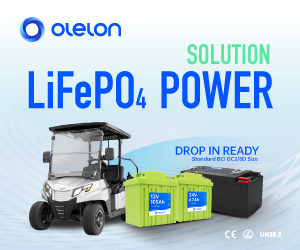Sometimes great technological progress is made by making things smaller. Any number of examples could be cited–certainly in electronics, a field which provides numerous examples from increases in the processing power of CPUs to exponential gains in hard drive capacities. For that matter, introduction and growth of electronic controls and accessories in small vehicles has been an on-going phenomenon.
We are now beginning to see the next wave of small vehicles being introduced with remarkable new technology that is knocking on the door of mass commercialization. Most of these innovations come from abroad, particularly from Europe and a notable entry from Canada. And we are not only talking vehicles, several of which I have mentioned in previous columns, but also two key and obvious components of small, electric vehicles: the motor and batteries. Let’s start with motors and save battery and vehicle applications for the next column.
Axial flux permanent magnate (AFPM) electric motors and interior permanent magnate (IPM) motors
AFPM and IPM motors are two different electric motor designs using permanent magnets. PM motors are used in most conventional, on-road vehicles, but have not yet been offered in small, task-oriented electric-powered vehicles (eSTOVs). This could well be another instance in which on-road technology becomes adaptable to STOVs as cost reductions emerge, the result of product upgrades and volume production. Here are three examples of this technology:
Magnax AFPM Technology
Magnax, a Belgium-based company, has announced prototype development of a powerful electric motor using axial flux, permanent magnate technology. Axial flux topography, according to the company has the following advantages:
- Dual permanent magnet rotors, for the highest possible torque-to-weight ratio;
- Yokeless stator, for the shortest possible flux paths;
- Rectangular section copper wire, for the highest possible copper fill factor;
- Concentrated windings, eliminating coil overhang;
- High performance, grain-oriented electrical steel, thereby lowering core losses;
- A patented system for cooling the winding, for the lowest possible stator temperature;
- A manufacturing chain based on low-cost, scalable production processes.
For those with a further technical bent, see the Magnax white paper. The bottom line is, however, significantly greater horsepower at a lower weight.
Ashwoods Electric Motors
I have already introduced readers to Ashwoods in my take on the most recent PGA Show in Orlando. The company exhibited at the show and introduced its version of a permanent magnet motor. In this case the technology is what is called an “interior permanent magnet” (IPM) motor.
PM motors are, however, used in other markets, particularly the off-road construction market, where their additional cost is a much smaller percentage of the equipment cost. Ashwoods Electric Motors, based in Exeter, U.K., has a track record of engineering solutions in these markets, and with an appearance at the PGA Show, clearly has a focus on the traction market for eSTOVs. The company had on exhibit three PM models, the 200-33, 200-50, and 200-66. Here are the official performance parameters:
Converting kW to horsepower, using standard conversion ratios, these electric motors deliver from 6.7 h.p. to over 42 h.p. of power. PM motors have a number of advantages over AC or DC motors, specifically PM motors are:
- Smaller—close to 1/3 the size of a traditional AC induction motor
- Lighter—greater power density results in a significant weight reduction
- Greater efficiency—90% efficiency for most of the working range required by the application;
- Continuous power close to 75% of peak power, based on unique Ashwoods design.
It should be noted that Ashwoods also makes an axial flux PM motor. AFPM motors have, at least in the past, a number of difficulties when attempting to realize commercial level volumes, which has made them quite expensive. Magnax claims to have solved these problems, and its prototype models are scheduled for a market launch in early 2019. The pros and cons of AFPM and IPM motors are discussed at length, and quite objectively, in the Magnax white paper cited above, to which you can link.
SilverWolf Vehicles, Inc.
SilverWolf is a Canadian company and made a name for itself with its 4WD conversion kits, introduced several years ago. Now the company has developed and is marketing a 12 hp PM AC motor, which it packages with either a 460 amp or 760 amp controller, specially designed for the motor. The motor is about ½ the weight of a conventional AC.
The motor-controller combination results in as much as 20% increased distance and substantially greater torque and horsepower than the conventional induction motor. The two components together run a little under $2,000, making this a retrofit at a very attractive price.
From the standpoint of immediate application, SilverWolf is, by far, ahead of the game as compared with Magnax and other companies that are in the prototype, proof-of-technology stage. Ashwoods will give SilverWolf a run for their money, if they focus on PTVs and establish sales, distribution, and service in the U.S.
Other manufacturers coming to the fore, mostly from Europe
Other manufacturers of PM motors are coming to the fore in Europe, a number of them concentrating on large-scale generators and wind energy technology. Two other U.K. companies bear watching, Yasa Motors, based in Oxford Industrial Park, Kidlington, U.K. and Saietta Motors, located in Heyford Park, Oxfordshire, a former RAF base.
While Yasa seems to be focusing on bringing their P400 and P750 series of AFPM motors into the on-road automotive field, and a range of potential applications in marine industries and aircraft, Saietta takes a somewhat different direction. Based on what I can see on their website, Saietta is more focused on recreational vehicle applications. These applications include motorcycles, ATVs, and even go-carts. Interestingly enough, no mention of golf car-type PTVs.
Even more interesting is that Saietta’s technology and motor will be used in the Baro One, a stylish and progressive low-speed vehicle that you may well see at your local gated community in the not-to-distant future. It Is not only a low-speed vehicle, but a transition vehicle into the new world of urban mobility. But why is it all coming from Europe at this point? (I’ll have other examples.) I’ll save discussion of these teasers for my next column.
It should be noted that Ashwoods also makes an axial flux PM motor. AFPM motors have, at least in the past, a number of difficulties when attempting to realize commercial level volumes, which has made them quite expensive. Magnax claims to have solved these problems, and its prototype models are scheduled for a market launch in early 2019. The pros and cons of AFPM and IPM motors are discussed at length, and quite objectively, in the Magnax white paper cited above, to which you can link.
SilverWolf Vehicles, Inc.
SilverWolf is a Canadian company and made a name for itself with its 4WD conversion kits, introduced several years ago. Now the company has developed and is marketing a 12 hp PM AC motor, which it packages with either a 460 amp or 760 amp controller, specially designed for the motor. The motor is about ½ the weight of a conventional AC.
The motor-controller combination results in as much as 20% increased distance and substantially greater torque and horsepower than the conventional induction motor. The two components together run a little under $2,000, making this a retrofit at a very attractive price.
From the standpoint of immediate application, SilverWolf is, by far, ahead of the game as compared with Magnax and other companies that are in the prototype, proof-of-technology stage. Ashwoods will give SilverWolf a run for their money, if they focus on PTVs and establish sales, distribution, and service in the U.S.
Other manufacturers coming to the fore, mostly from Europe
Other manufacturers of PM motors are coming to the fore in Europe, a number of them concentrating on large-scale generators and wind energy technology. Two other U.K. companies bear watching, Yasa Motors, based in Oxford Industrial Park, Kidlington, U.K. and Saietta Motors, located in Heyford Park, Oxfordshire, a former RAF base.
While Yasa seems to be focusing on bringing their P400 and P750 series of AFPM motors into the on-road automotive field, and a range of potential applications in marine industries and aircraft, Saietta takes a somewhat different direction. Based on what I can see on their website, Saietta is more focused on recreational vehicle applications. These applications include motorcycles, ATVs, and even go-carts. Interestingly enough, no mention of golf car-type PTVs.
Even more interesting is that Saietta’s technology and motor will be used in the Baro One, a stylish and progressive low-speed vehicle that you may well see at your local gated community in the not-to-distant future. It Is not only a low-speed vehicle, but a transition vehicle into the new world of urban mobility. But why is it all coming from Europe at this point? (I’ll have other examples.) I’ll save discussion of these teasers for my next column.


























